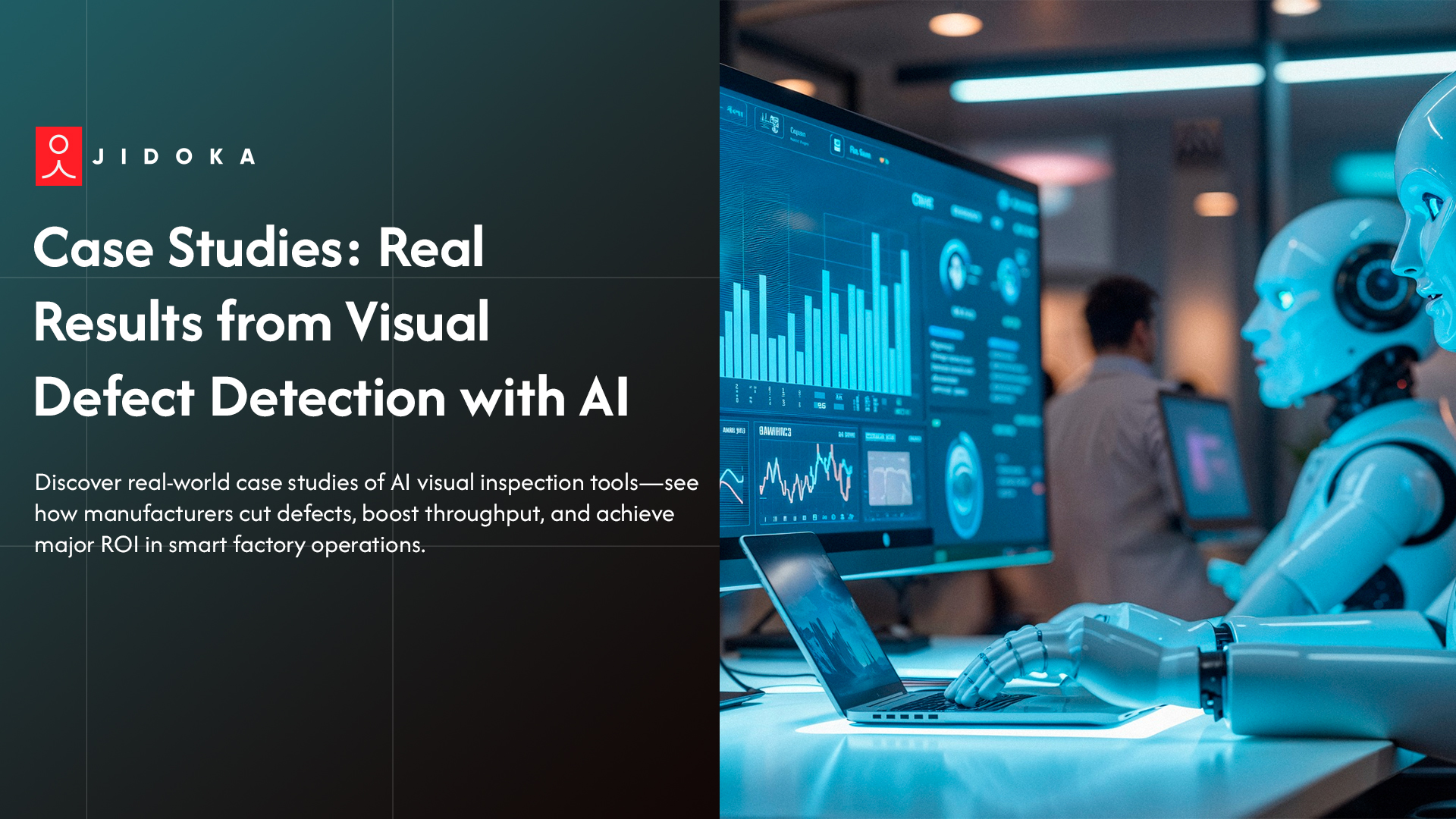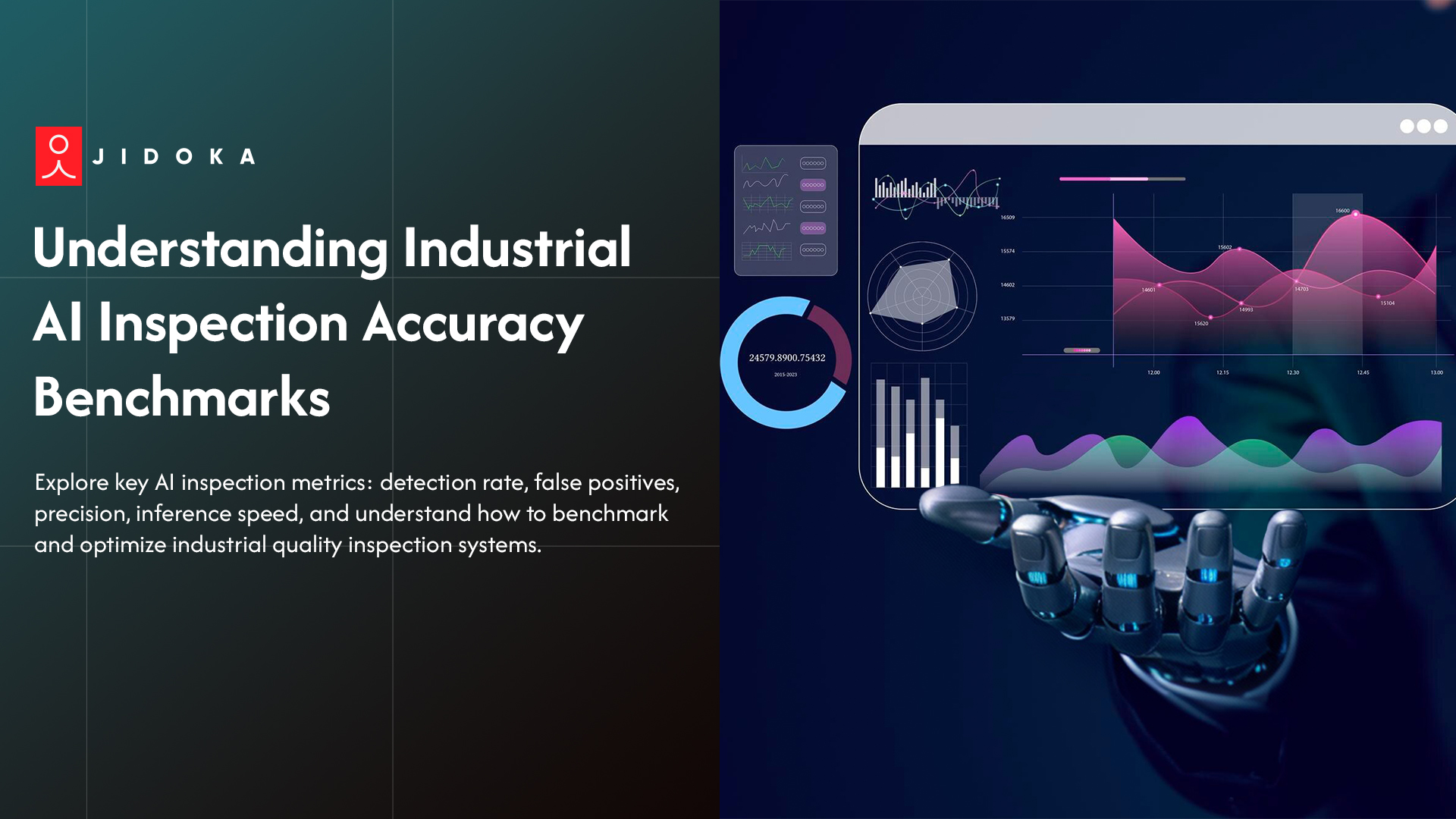A glass bottle starts life on fire at 1,200 degrees Celsius. It survives or dies on the "Cold End." Most guides ignore the mechanics. They talk about abstract AI but forget the physical reality. If you don't handle a bottle correctly at 600 PPM, your glass container inspection cameras see nothing but blur.
We will walk the 7-Stage Inspection Gauntlet. This specific sequence powers every modern factory line. Hardware spots the defect. Jidoka’s AI Suit decides why it happened. Effective glass container inspection demands more than software. It needs a robust glass container inspection system linking physical handling with intelligence. You need to tell the furnace to fix the problem, not just reject the bottle
Stage 1: The Physical Stress Test (Squeeze Testing)
Your glass container inspection protocol must start with physical pressure. The bottle travels between a large rotating squeeze wheel and a fixed pressure pad. These belts apply specific compressive force to the sidewalls. This mimics the stress the bottle faces during filling and capping.
Weak glass shatters here. We call this "infant mortality." It sounds harsh, but it prevents catastrophic breakage at your customer's facility. A comprehensive glass container inspection system records this pressure data. Jidoka captures this to map glass strength trends over time. We see when a batch turns brittle before it fails later.
Once the body passes the stress test, we look at the most complex geometry: the finish.
Stage 2: The Critical Seal (Bore & Finish Inspection)
We employ high-speed cameras looking directly down into the bore. This specific bottle neck inspection system targets the most complex geometry on the bottle.
Common defects include:
- LOF (Line Over Finish): A hairline crack crossing the sealing surface. This causes gas leakage.
- Chipped Sealing Surface: Tiny fractures that prevent carbonation retention.
Standard lighting often fails here. It misses "split finishes" because they don't cast shadows. Jidoka uses Multi-Angle Top Lighting to solve this. We strobe light from different elevations. This differentiates between a harmless raised mold seam and a critical crack. Precision container quality inspection for glass demands this level of detail to ensure the cap stays tight.
Stage 3: The Invisible Crack Hunt (Check Detection)
We use rotation to find these flaws. The bottle enters a "Star Wheel" indexer. It spins 360 degrees while emitters blast light at specific angles, typically 45 and 90 degrees. When light hits a crack, it flashes back to the receiver.
This method detects checks in the neck threads and shoulder. It remains a standard part of glass bottle defect detection. However, standard sensors struggle here. They often confuse water droplets from cooling or heavy embossing with cracks.
This causes false rejects. You need specific automated bottle defect detection logic to fix this. Jidoka Kompass filters these "noise" signals by analyzing reflection patterns. We reduce false rejects by 40% and save good glass. Reliable glass container inspection distinguishes between a water spot and a fracture.
Stage 4: Wall Thickness & Ovality (Non-Contact Gauging)
Modern glass container inspection relies on Chromatic Confocal Sensors. Old capacitive strips required close proximity, but optical sensors work better. They use white light splitting to measure the exact distance to the glass surface and the wall thickness itself.
This machine vision for glass packaging technique spots specific defects:
- Thin Wall: The glass is too fragile and poses a structural risk.
- Ovality: The bottle is "out of round." This jams labeling machines downstream.
We correlate this thickness data directly to the Mold Number. If Cavity #12 consistently blows thin glass on the left side, we know the parison distribution in the IS machine is uneven. A smart glass container inspection system uses this data to diagnose production issues, not just sort trash.
Stage 5: The Visual Body Scan (Sidewall Inspection)
The "Killer" defect here is the Bird Swing. This thin string of glass spans the inside of the bottle. It forms when parison walls touch during blowing. If it breaks, it becomes a glass needle in the beverage. Glass container inspection must catch this every time to prevent massive liability.
We also face a challenge with branding. To a standard camera, an embossed logo looks just like a scratch. Machine vision for glass packaging often struggles to tell them apart.
Jidoka solves this with Deep Learning. We map the "safe" surface of the logo and subtract its known geometry from the image analysis. This leaves only the automated bottle defect detection anomalies exposed. You get heavy branding without compromising safety.
The sides look good. Now we check the foundation to ensure no stones hide in the base.
Stage 6: The Foundation Check (Base & Bottom Inspection)
The bottle crosses an illuminated gap. Glass container inspection relies on "Bottom-Up Lighting" here. We scan through the thickest glass to find solid inclusions. If you skip this, you risk shipping explosive bottles.
Focus on these defects:
- Stones: Unmelted silica. These act as stress concentrators.
- Spikes: Glass needles sticking up from the floor.
Thick bases trick normal cameras. Standard lights wash out the image. We solve this with Polarized Light. Glass stress causes birefringence. Polarization makes "Fused Glass" glow white against a black background. Your glass container inspection system needs this contrast. It catches defects that a basic glass container inspection setup misses.
Stage 7: The "Golden Loop" (Mold Number Reading & Feedback)
This step transforms glass container inspection into process control. The system reads the "Dot Code" or alphanumeric number molded onto the bottle. This ID tags every single defect back to the specific mold cavity that created it.
Jidoka’s AI Suit powers this "Golden Loop." Instead of just rejecting a bad bottle, the Nagare Platform closes the gap.
- The Trigger: The glass container inspection system notices Mold #42 failed Stage 4 five times in a row.
- The Signal: It sends a direct alert to the Hot End IS Machine operator. "Mold #42 is drifting. Lubricate now."
Automated bottle defect detection stops being just a filter. It becomes a feedback mechanism. You stop making bad glass immediately instead of finding a pallet of scrap two hours later. This defines effective inline glass inspection.
Jidoka Tech: Your "AI Suit" for Total Quality Control
Jidoka Tech builds a glass container inspection system that performs under real production pressure. Their team aligns cameras, lighting, PLC timing, and edge units so the system works across all shifts.
Plants running Jidoka’s setup report consistent performance up to 300 million inspections per day. Jidoka’s strength comes from combining two systems that extend glass container inspection beyond standard checks:
1. KOMPASS: High-Accuracy Inspector Kompass acts as the "Eye" of the Cold End. It reaches 99.8%+ accuracy on live lines and reviews each frame in under 10 ms. This speed is vital for high-volume automated bottle defect detection.
- Learn new bottle variants with 60–70% fewer samples.
- Handles complex glass challenges like sidewall embossing, heavy branding, and light refraction.
KOMPASS supports glass container inspection deployments where consistency matters.
2. NAGARE: Process and Analyst Nagare acts as the "Brain." It tracks the production flow through existing cameras. In a glass container inspection system, it connects the defect data back to the machine source.
- Flags process drift or mold issues in real time.
- Cuts rework by 20–35% by catching defects early.
NAGARE reinforces machine vision for glass packaging by turning images into actionable plant data.
Jidoka runs the full glass container inspection suite on local edge units to avoid delays. This guarantees your automated bottle defect detection keeps pace with the conveyor, regardless of internet connection.
Schedule a demo to watch Jidoka’s AI Suit in action.
Conclusion
High-speed production hides defects. Standard cameras often struggle with "Bird Swings" or invisible checks in the finish. They flag harmless water droplets as faults, wasting perfectly good glass.
Miss one sharp defect, and you face a costly recall. Consumers get injured. Your brand takes a permanent hit. Meanwhile, false rejects silently bleed your margins every single hour.
Jidoka Tech eliminates this risk. Our glass container inspection system unifies precise hardware with the AI Suit to catch real flaws and ignore noise. We identify the root cause instantly.
Connect to Jidoka Tech today to audit your Cold End and perfect your glass container inspection.
FAQs
1. What is a "Bird Swing" and why is it dangerous?
A Bird Swing is a thin glass thread spanning the bottle's interior. It acts like a hidden glass needle in beverages, posing severe safety risks. Precise glass container inspection must catch these instantly. Our automated bottle defect detection identifies these internal hazards before they leave the plant, preventing costly liability and protecting consumers.
2. How does Jidoka handle the "wobble" of bottles on a conveyor?
High speeds cause vibration, confusing standard sensors. Jidoka uses dynamic Region of Interest (ROI) tracking to lock onto the moving bottle. This allows our glass container inspection system to ignore background noise and analyze the container clearly. It ensures accurate inline glass inspection results even when bottles shift or wobble on the belt.
3. Can this system inspect hot bottles (Hot End)?
We use Infrared (IR) modules for Hot End heat monitoring, but detailed machine vision for glass packaging works best at the Cold End. Once glass stabilizes, container quality inspection for glass identifies fine cracks and stones. Jidoka connects both ends, using Cold End data to adjust Hot End furnace settings for total control.
%20Complete%20Step-By-Step%20Guide%20to%20Glass%20Container%20Inspection.jpg)







